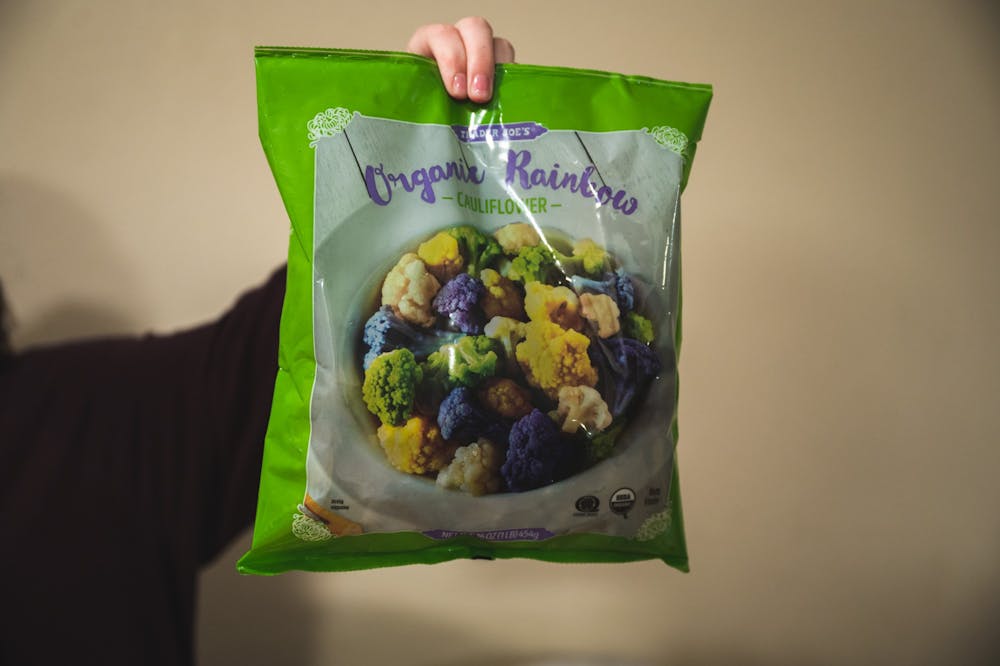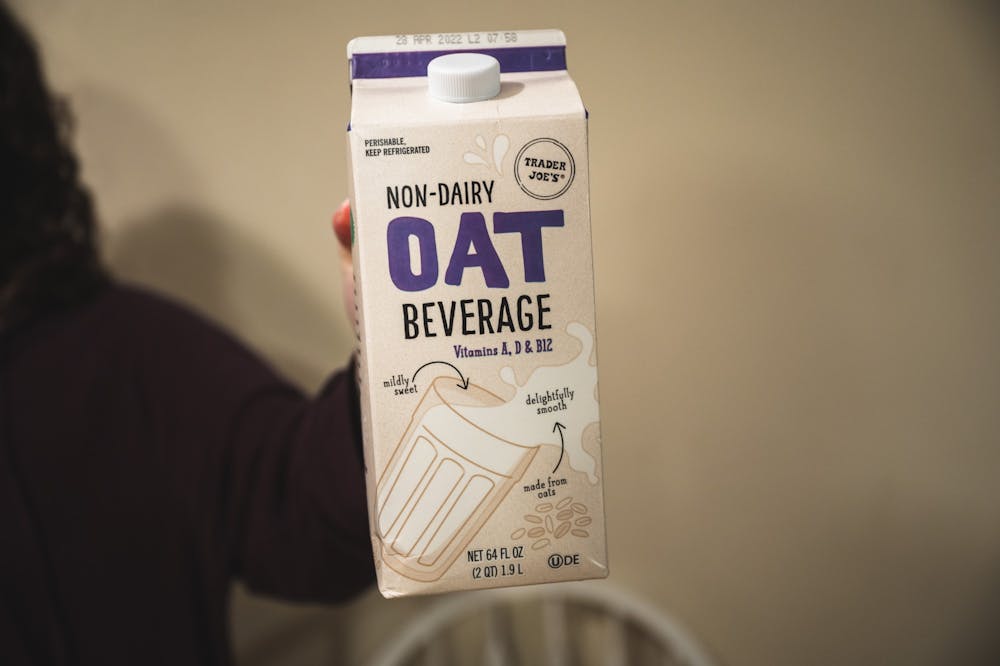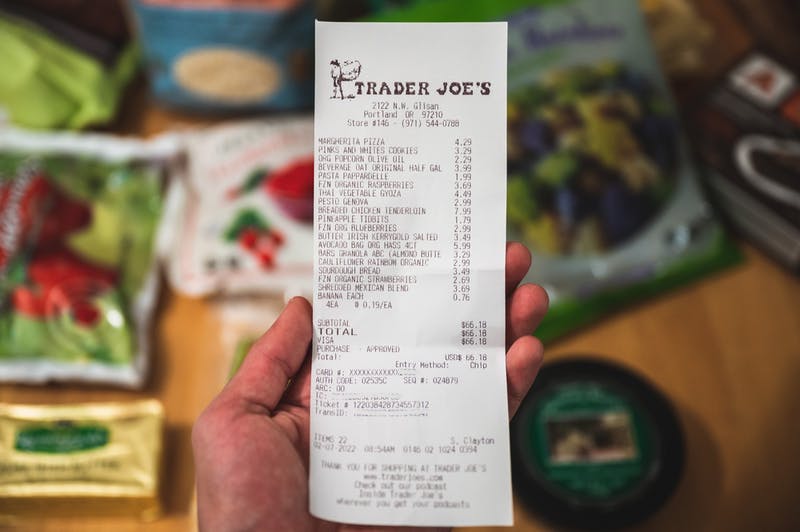If you’ve gone to the grocery store recently, you’ve probably noticed inflation hard at work. Grocery prices across the country have risen around 6% since 2020. As college students, buying groceries while trying to stick to a budget can be difficult, especially while trying to eat healthy and sustainably.
Although buying sustainably sourced, healthy groceries while on a budget is not easy, there are ways to make it happen. The Beacon talked with UP’s environmental science, integrative health and wellness, and finance professors for tips to make this process easier.
According to professor Christopher Dunnaville, who teaches BUS 150, Smart Money, the first thing to do is to establish your budget. Dunnaville encourages students to look at their monthly gross income and then determine fixed costs, such as rent, utilities etc.
Dunnaville recommends that students look at the Education Data Initiative, a website that helps students look at different meal plan costs.

Trader Joes is one local store offers healthy foods at a college student budget.
Photo Illustration by Andrew Gotshall
“They have a thrifty meal plan, a low-cost meal plan, a moderate cost meal plan, and a liberal plan,” Dunnavile said.
Once you establish an income, you can develop a list. When the time comes to go grocery shopping, Dunnaville recommends buying in bulk when you can.
“If you’re living off campus with roommates, buy in bulk,” Dunnaville said. “Go to Costco and buy the big package of pasta.”
This can help save you money in the long run. Having non-perishable staples in bulk helps reduce how often you have to buy that item. This is also more cost-effective when you live with several people because the price can be split.
According to professor Heather Carpenter, who teaches environmental science and food sustainability, eating sustainably can be expensive and misleading at times. The most important thing to consider is to try to reduce your agricultural impact. Carpenter warns students to read labels and be aware of misleading labels on food. Marketing companies are very good at tricking consumers into buying processed foods that aren’t actually sustainable.
“There are all sorts of greenwashing,” Carpenter said. “In general, the more processed it is, the less green it is.”
The term “organic” typically comes to mind when thinking about sustainable groceries. However, according to Carpenter, buying organic isn’t always necessary, especially if you are on a budget. She explains that buying organic is better for the earth, but when it comes to your health, the pesticide residue is the biggest thing to consider.

Finance professors suggest that buying cheaper staples in bulk will save money in the long run.
Photo Illustration by Andrew Gotshall
It can be helpful to use the “Clean 15 and Dirty Dozen” concept — a chart that environmental scientists created to categorize non-organic produce based on how safe they are to eat with pesticide use — Carpenter said.
The Clean 15 are the produce that can be eaten non-organic because of the low pesticide residue, and the Dirty Dozen are the produce that have the most toxic residue and should be eaten organic.
“I always tell students to buy organic strawberries because with strawberries you cannot wash the [toxic residue] off,” Carpenter said.
Often, it produces a peel that can be eaten non-organic, such as oranges or bananas.
It is also important to try to buy locally sourced food. Although eating organic is important for the planet, it does not make sense to eat organic if it is being shipped across the country or globe. The process of shipping food in an airplane or a truck leads to increasing CO2 levels. Carpenter asks students to take advantage of the PNW’s produce.
“We’ve got great apples around here,” Carpenter said. “We’ve got great berries. Buy local versions of it.”
It’s worth noting that eating sustainably doesn’t mean you have to give up your favorite foods. For example, the meat and dairy industries have some of the highest carbon footprints. If you are unable to cut these food groups out and go entirely plant based, the next best thing you can do is to try to limit your consumption of these products, and pay attention to where it is coming from.

Oat milk is a great way to incorporate more sustainable, dairy substitutes into your diet.
Photo Illustration by Andrew Gotshall
“If you’re a meat eater, eat local meats and less red meat,” Carpenter said. “If you love your dairy, try and find local, more sustainably-done dairy.”
According to integrative health and wellness professor Tanya Bachman, even if we aren’t constantly aware of it, the food we put in our bodies can influence our mental and physical well-being.
“When you’re eating things out of packages, like a Twinkie for example, that is so many chemicals and high sugar and it’s not feeding our bodies real nourishment,” Bachman said.
“From a mental health standpoint, we don’t have balanced neurotransmitters and that can offset things like depression and anxiety.”
Under $50 grocery list: Fred Meyer
Simple Truth (Cage-Free) Eggs: $2.79
½ gallon Simple Truth Organic Whole Milk: $3.49
Kroger Mexican-style Cheese: $2.69
Private Selection Whole Wheat Bread: $2.50
Kroger 5lb Jasmine Rice: $6.29
5 Bananas: $.23 x 5 = $1.15
Simple Truth Organic Baby Spinach 5oz: $3.50
Simple Truth Organic Baby Carrots: $1.79
Simple Truth Organic Gala Apples: $4.29
Kroger Yellow Onions: $1.69
Free Range Chicken Breast: $9.28
Barilla Penne Pasta: $1.79
Barilla Farfalle Pasta: $1.79
Simple Truth Organic Tomato Sauce: $2.39
Simple Truth Peanut Butter: $4.29
Total = $49.72
Isabel Cornejo is a Reporter at The Beacon. She can be reached at cornejoi22@up.edu.

